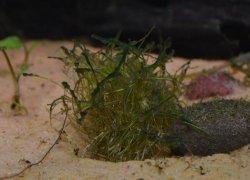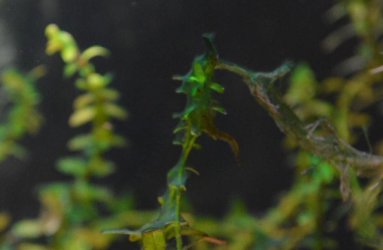Munroco said:
This is the same method I used on my other 2 tanks, the difference being I had a lot more plants to start.
I'm loath to start it again. I'm going to buy a bundle of cheap mostly stem plants and see if I can use up most of these excess organics. If that doesn't work I'll take out the compost.
As I have certainly learned through experience from running 7 aquaria, each aquarium can be very different in terms of the biology. The organics are the cause of cyano, but if one can somehow use the organics then the cyano will be thwarted. I have battled cyano in one tank, twice.
I didn't focus on the light previously, but I see some issues here, now that you have mentioned the Kelvin. Kelvin is the unit used to measure the colour temperature of light. The higher the number, the "cooler" (more blue, less red/green), and the lower the K number, the "warmer" with more red/green and less blue. Checking the specs linked, it gives 8000K and 10000K, which means less red/green and high blue. This is better over marine systems, but over planted freshwater can have issues.
Aquatic plants need red and blue to drive photosynthesis. While green does not have much effect in this aspect, it does somehow assist plants. It may be the additional brightness that green gives. But tests have shown that all else being equal, plants responded best to a mix of red/green/blue light, with a Kelvin between 5000K and 7000K.
Over my dual-tube tanks, which I have run for 20 years now, I have experimented with various tubes. Using a mix of 6500K and 10,000K, the plants did well, but I always seemed to be dealing with sporadic brush algae issues. I went to two 6500K and the algae lessened. I am now using one 6500K and one 5000K, for two years, and the plants are responding better, and algae is not even an issue any longer.
Light is a factor in cyanobacteria obviously; if you have intense light without the necessary balance for plants to utilize, and with the additional organics, cyano will be difficult to eradicate. But I would be interested in developments.
Byron.
 /www.fastlight.co.uk/acatalog/Arcadia_OTL_Freshwater_Stretch_LED_Luminaire.html )
/www.fastlight.co.uk/acatalog/Arcadia_OTL_Freshwater_Stretch_LED_Luminaire.html )  /www.fastlight.co.uk/acatalog/Arcadia_OTL_Freshwater_Stretch_LED_Luminaire.html )
/www.fastlight.co.uk/acatalog/Arcadia_OTL_Freshwater_Stretch_LED_Luminaire.html ) 


